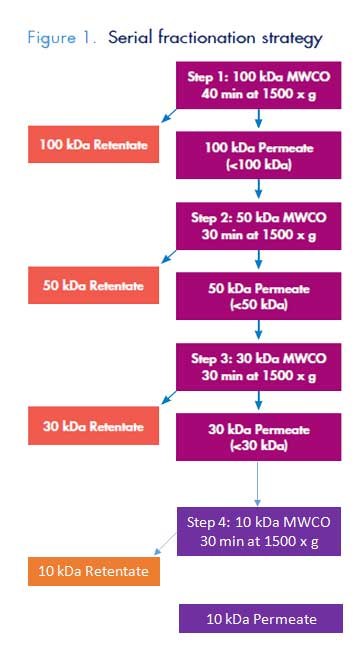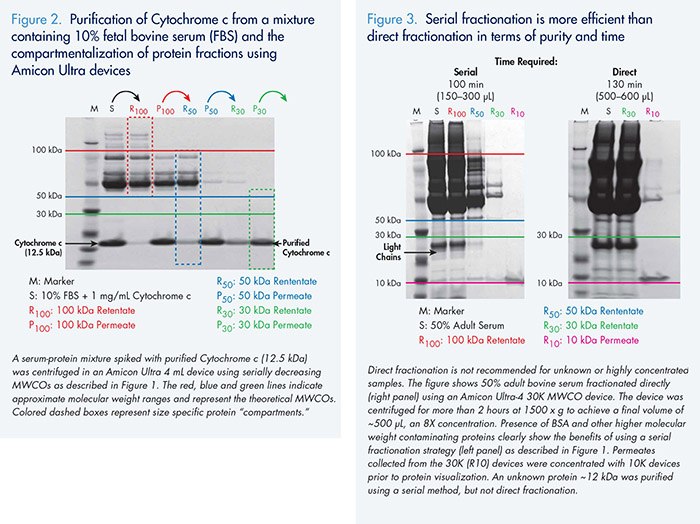A Simple Strategy for Protein Enrichment Using Ultrafiltration
The human plasma proteome is a vast resource for biomarker discovery and investigation. Traditionally, gel filtration chromatography has been used to fractionate protein solutions based on size1,2. However, gel filtration is laborious, limited by sample size, and time-consuming. It also dilutes the sample significantly. These limitations can be overcome by ultrafiltration, which has been reported3–5 as a sample preparation method for preparing low molecular weight (<10 kDa) fractions for biomarker analysis. Here, Amicon® Ultra devices were used to purify cytochrome c from a mixture containing 10% fetal bovine serum.
Method
In this experiment, ultrafiltration devices were used to enrich both low molecular weight (LMW) and high molecular weight (HMW) fractions from serum. Using a serial filtration approach (Figure 1), proteins were fractionated through decreasing molecular weight cutoff (MWCO) in Amicon® Ultra 4 mL devices ranging from 100 kDA to 10 kDa MWCO.

Results

This serial enrichment strategy enabled protein compartmentalization and improved throughput as compared to direct filtration using a lower MWCO device (Figure 2, above). Samples prepared using the enrichment stragegy also showed improved purity compared to traditional direct filtration (Figure 3, above). The data show that serial ultrafiltration is a viable approach for size-based protein enrichment.
Materials
References
To continue reading please sign in or create an account.
Don't Have An Account?